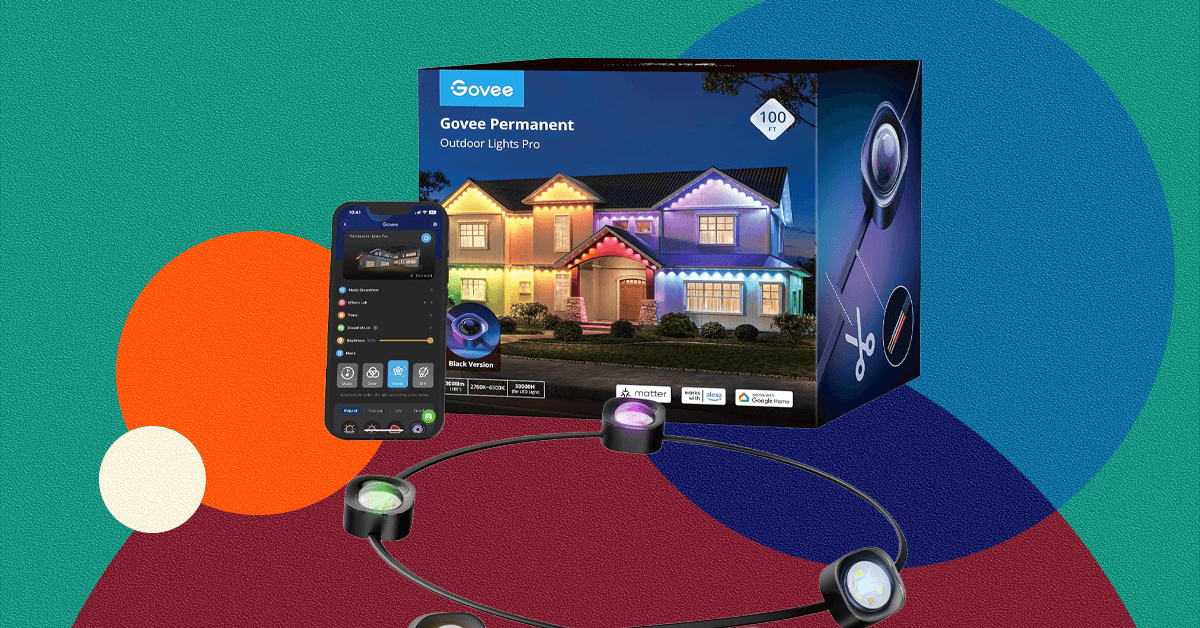Tech
Splunk.conf: Cisco and Splunk expand agentic SOC vision | Computer Weekly

At Splunk’s annual .Conf event, the Cisco-backed observability and data security specialist made its first run at the agentic artificial intelligence (AI) enhanced security operations centre (SOC), unveiling two agent-powered security operations (SecOps) tools for users to explore.
In a Tuesday keynote address, Splunk security senior vice president and general manager Mike Horn said that SecOps must to evolve and the need to simplify workflows, accelerate and enhance SOC operations, and expand detection capabilities and threat visibility were clear.
Splunk Enterprise Security Essentials Edition and Splunk Enterprise Security Premier Edition – delivered within version 8.2 of the firm’s Enterprise Security (SEC) security information and event management (SIEM) solution – unify a number of security workflows in the threat detection, investigation and response (TDIR) sphere.
Essentials Edition unifies SEC 8.2 with Splunk AI Assistant in Security and is available today, while Premier goes a step further adding Splunk SOAR and Splunk UEBA, and enters controlled availability later in September.
Splunk and Cisco – which have made significant and speedy progress on technical integration since coming together in 2024 – claim that the new features will place agentic AI at the heart of the SOC in order to extend security intelligence across the network.
“Our security offerings unify detection, investigation, and response into a single, intuitive workspace, eliminating tool fragmentation and significantly boosting efficiency,” said Horn.
“Built-in AI can help cut alert noise and reduce investigation time from hours to minutes. Now every SOC can better position to stay ahead of advanced threats and empower analysts at every level.”
“With today’s increasingly sophisticated threats and sprawling attack surfaces, security teams can’t afford to waste time switching between fragmented tools and operating with siloed visibility,” added Michelle Abraham, research director for security and trust at IDC.
“By integrating multiple security capabilities into a single, cohesive environment, security platforms empower organisations to move from reactive to proactive security, streamlining workflows, improving detection and response, and ultimately reducing risk.”
In addition to this, parent Cisco plans to release a number of additional AI features to power the agentic SOC, with the intent of enabling cyber pros to keep focus on more strategic aspects of their roles while agent bots sift the raw security data and perform proactive, autonomous SecOps.
Some of the agentic capabilities in development include triaging to evaluate, prioritise and explain security alerts; malware reversal to explain malicious scripts; playbook authoring to translate natural language intent into functional SOAR playbooks; response importer, using multi-modal large language models (LLMs) to import standard operating procedures into security response plans; detection library to help turn detections from hypotheses to production, and personalised detection SPL generator to personalise detections within the library to align with customer SOC environments.
Additionally, Splunk expanded the integration of Cisco Isovalent Runtime Security (eBPF) into Splunk, enhancing workload visibility and better pinpointing issues, and announced that Splunk Cloud Platform’s Federated Search for Amazon S3 and Security Analytics and Logging (SAL) will allow cyber pros to run security analytics on Cisco firewall logs stored in SAL directly, without needed to ingest.
These features and capabilities will come on-stream within the next 12 months.
Era of simplification
Speaking to Computer Weekly at .Conf, James Hodge, Splunk GVP and chief strategy advisor for EMEA, said that the advent of the agentic SOC heralded an era of simplification for cyber security professionals, describing the underlying technology as “phenomenally complicated” in many ways.
“I was really encouraged, and really excited this week, because from a user perspective we’re simplifying all of that. We’re abstracting that complexity, and just surfacing what you need,” said Hodge.
“For anyone that works with it, the word I’d use is liberating, because you’re no longer battling with tools or techniques, you’re able to go and get that question answered so you can go and progress,” he added. “For people, it means they can get on with doing what they’re paid to do.”
Tech
AMD CEO Lisa Su Isn’t Afraid of the Competition

Michael Calore: Recording works.
Lauren Goode: Recording. Yeah.
Michael Calore: Yeah. It’s like when people say, let me film that. You’re not actually filming anything. You’re shooting a digital video.
Lauren Goode: So then if you have a video podcast, are you shooting the podcast? What do you say? Do you say taping, then?
Michael Calore: I think you say recording because it just—
Lauren Goode: Recording the pod.
Michael Calore: Yeah.
Lauren Goode: We’re recording the pod.
Michael Calore: It covers all the bases.
Lauren Goode: We’re capturing it.
Michael Calore: That’s what we’re doing.
Lauren Goode: We’re sublimating it. All right. Well, should we record this pod?
Michael Calore: I would like to, yes.
Lauren Goode: Let’s do it.
Michael Calore: Honestly, I’m still recovering from last week’s Big Interview event. My throat is still feeling a little bit raw, even though it’s been like four or five days.
Lauren Goode: You sound delightful to me.
Michael Calore: Thank you.
Lauren Goode: But that really was an epic event.
Michael Calore: It was.
Lauren Goode: Yeah.
Michael Calore: You were on stage.
Lauren Goode: I was. I was first up in the morning. Katie, our boss, gave the intro to the conference and then it was me and Lisa Su, the CEO of AMD. And not only was it a really interesting conversation, but then I was done for the day. I didn’t have to do any more interviews after that. And I just got to listen and absorb, and there were some other really great talks.
Michael Calore: There were, yes. And we’re going to talk through some of them. We’re also going to listen to your conversation with Lisa Su, and then we’ll talk about it, and we’ll take listeners behind the scenes of The Big Interview.
Tech
Why SpaceX Is Finally Gearing Up to Go Public

SpaceX is planning to raise tens of billions of dollars through an initial public offering next year, multiple outlets have reported, and Ars can confirm. This represents a major change in thinking from the world’s leading space company and its founder, Elon Musk.
The Wall Street Journal and The Information first reported about a possible IPO last Friday, and Bloomberg followed that up on Tuesday evening with a report suggesting the company would target a $1.5 trillion valuation. This would allow SpaceX to raise in excess of $30 billion.
This is an enormous amount of funding. The largest IPO in history occurred in 2019, when the state-owned Saudi Arabian oil company began public trading as Aramco and raised $29 billion. In terms of revenue, Aramco is a top-five company in the world.
Now SpaceX is poised to potentially match or exceed this value. That SpaceX would be attractive to public investors is not a surprise—it’s the world’s dominant space company in launch, space-based communications, and much more. For investors seeking unlimited growth, space is the final frontier.
But why would Musk take SpaceX public now, at a time when the company’s revenues are surging thanks to the growth of the Starlink Internet constellation? The decision is surprising because Musk has, for so long, resisted going public with SpaceX. He has not enjoyed the public scrutiny of Tesla, and feared that shareholder desires for financial return were not consistent with his ultimate goal of settling Mars.
Data Centers
Ars spoke with multiple people familiar with Musk and his thinking to understand why he would want to take SpaceX public.
A significant shift in recent years has been the rise of artificial intelligence, which Musk has been involved in since 2015, when he cofounded OpenAI. He later had a falling out with his cofounders and started his own company, xAI, in 2023. At Tesla, he has been pushing smart-driving technology forward and more recently focused on robotics. Musk sees a convergence of these technologies in the near future, which he believes will profoundly change civilization.
Raising large amounts of money in the next 18 months would allow Musk to have significant capital to deploy at SpaceX as he influences and partakes in this convergence of technology.
How can SpaceX play in this space? In the near term, the company plans to develop a modified version of the Starlink satellite to serve as a foundation for building data centers in space. Musk said as much on the social media network he owns, X, in late October: “SpaceX will be doing this.”
Tech
We Found the Permanent Outdoor Lights Worth Putting on Your Home

Weatherproofing. Every model needs a weatherproof rating to survive outside, so if you don’t see one, don’t buy it. There’s usually a lower rating for the control box compared to the rest of the lights, so be sure you can put that somewhere that’s a little less exposed to the elements. (As mentioned above, make sure you have an outdoor outlet, and check if there’s only one on a certain side of your home in case it limits your installation options.)
A range of installation options. You’ll want a set that comes with plenty of options for your own installation, including adhesive and drilled mounting options. What you need will vary based on your home design and materials; e.g., you’ll want adhesive for homes you can’t drill into. WIRED reviewer Kat Merck, who tested a couple different permanent lights, especially liked sets that had holders you screw onto your home that the puck-style permanent lights can slide onto.
Controls for individual lights. This should be a no-brainer, but some cheaper lights won’t give you this ability or have more roadblocks for customized control. Make sure you’ll have easy individual controls, or you might find yourself frustrated with the design results of these lights. It’s similar to design controls that you’d see on smart bulbs and smart string lights.
A great app. This goes hand in hand with the need for individual light control—a good app determines whether that and other features are accessible. Govee and Eufy, two of our favorite permanent outdoor lights we’ve tried, both have good apps that are easy to use and come with preloaded designs. These tech companies make more than just outdoor lights and make other favorite gear of ours, so they’re a good brand to trust to make a usable product and app. We also like Lepro’s more affordable lights, though the app had some extra hoops to jump through to get to controls, while Lumary’s app was a brutal experience for our tester.
Our Favorite Permanent Outdoor Lights
We’ve tested a handful of permanent lights on different homes, and have a few clear favorites. These options are all ones we recommend, provided your home exterior meets the constraints mentioned above.
This model from Govee has been one of our top picks in our smart Christmas lights review for a reason, and it’s still one of our favorite models at this price point for everything you’ll get with it. WIRED reviewer Simon Hill tested the 100-foot string that came with six sections, plus an extension code. He used adhesive and screw clips to secure the light pucks and cables, and found installation easy. This is a set that you can cut and splice, but he says that isn’t a task for the faint of heart. It has an IP67 rating, and an IP65 rating for the control box. The busy companion app has everything you could want within it: color controls, tons of Scenes (Govee’s lighting effects), scheduling abilities, and even a music sync option (though that felt a little gimmicky). There’s Matter support, and Govee can connect to Alexa and Google’s ecosystems for voice control. Simon says he’d like these lights to be closer together and the design to be a little more subtle, as you can see the cords pretty easily.
WIRED reviewer Kat Merck has tested two different sets of permanent outdoor lights on her home, and Eufy’s S4, incorporating RGB with both warm and cool whites, is by far her favorite. She’s found the app incredibly easy to navigate and find the features she wants, from preset holiday scenes (120!) and colors to schedules and brightness adjustments. There’s even an AI feature that lets you create customized light shows based on moods and scenarios. They were relatively easy to install on her home, which has nonstandard architectural features, as this set has extensions and can be cut and spliced. She says the lights aren’t quite as bright as the Lumary Max set below, but the brightness is adjustable. There’s also a radar motion sensor included, which she’s still testing. The Eufy S4 set also works with the Matter protocol, so it will work with Apple, Google, and Alexa’s smart home ecosystems. It’s got a waterproof rating of IP67 like the Govee set above.
Cync, which comes from appliance maker GE, makes affordable smart bulbs and other smart lights I like, so it’s not a huge surprise that I also liked the brand’s Smart Eave Lights. They were easy to install with 3M sticky strips already installed on the individual lights, and since my eaves are out of safe reach on my townhouse, I used the lights on my balcony railing with great success. One piece of the 100-foot set (it comes with four strings, plus an extension) was the perfect length to loop around my 9-foot-long railing. The set quickly connected to the Cync app, and the power cord is nice and long to make it easy to reach wherever your power outlet is. It has a waterproof rating of IP65.
If You Can’t Install Permanent Outdoor Lights
Not every home is a good fit for these types of lights. I haven’t yet found a permanent light set that works with my home, so here’s what I’ve used instead for a similar result.
These lights are photographed on a tree, but they have a weatherproof rating of IP44 (for both the lights and the power supply) to be used outside. I love how much you can customize these lights. You’ll use the app to take a photo of however you’ve set up your lights, whether that’s around the tree, around your balcony’s railing, or along the front of your house, and then you’ll be able to customize the lights and pattern based on how you arranged it. There are tons of fun light designs already in the app, and you can make your own. It’s a good option if you can only do string lights but want smart capabilities. These lights are also compatible with Amazon’s, Google’s, and Apple’s ecosystems. Twinkly also makes an icicle-style smart light string ($110), which I love using outside too; they’re currently hanging above my garage door.
More Outdoor Lights We’ve Tested
- Cync Outdoor Light Strip for $154: I was really hoping this would be a good solution for outdoor lights for my balcony, but this light strip is heavy and tall, and better designed to use to line a yard versus sticking onto the side of a railing. It comes with grass stakes to line it.
- Lepro’s E1 AI for $153 (50 ft): These permanent outdoor lights are completely sold out right now, but they are another more affordable option. However, they aren’t as cheap as Cync and you will have to get around the app’s AI to really get the most out of it.
- Lumary Outdoor Permanent Lights Max ($260 for 105 ft.): Lumary’s lights were frustrating and limiting for our tester. The app wasn’t intuitive or easy to use, and our tester actually had to have the power box replaced after she tried to connect the lights to a different phone. She liked how bright the lights were, and the fact there’s a physical remote, but the app, power box shutdown, and installation limitations compared with other sets (no splicing ability, installation recommended from the left) make this one we’d skip. Lumary has since released an updated version of its outdoor permanent lights, the Permanent Outdoor Lights 2, which includes a completely redesigned app, including the addition of custom-scene saving, but we haven’t tested them yet.
FAQs
What Are the Cons of Permanent Christmas Lights?
The only real downside to permanent Christmas lights, or permanent outdoor lights of any kind, is the cost. These sets usually cost significantly more than a light string, even the smart ones. That’s because they’re designed to last longer on your home, and the more expensive sets allow you to cut and splice the cords to perfectly fit your home instead of dangling strings and extra lights. It’s an investment, but one you can enjoy year-round.
Are Permanent Outdoor Lights Worth It?
Yes, because you’ll install them once and be good to go with every holiday in your future: Christmas! Halloween! Your fave sports team headed to a big championship match! Your kid’s graduation (or your own)! Similar to how smart bulbs can give you so many options inside your home, the possibilities are endless and something you’ll be able to use and enjoy year-round.
How Does WIRED Test Permanent Outdoor Lights? What Happens When We’re Done Testing?
WIRED tests permanent outdoor lights on the homes of our reviewers. We’ve tested these lights on three different homes in separate areas with serious weather: Washington state, Missouri, and Scotland. We’ve also tested a set in the more mild climate of Southern California. We install these on the homes themselves and leave them up for at least a few weeks, if not months and years (depending on performance), to see how they hold up. Our picks remain on our homes for long-term testing, as these lights are supposed to be permanent, and used sets are safely disposed of.
Power up with unlimited access to WIRED. Get best-in-class reporting and exclusive subscriber content that’s too important to ignore. Subscribe Today.
-

 Politics6 days ago
Politics6 days agoThailand launches air strikes against Cambodian military: army
-

 Sports1 week ago
Sports1 week agoAustralia take control of second Ashes Test | The Express Tribune
-

 Fashion6 days ago
Fashion6 days agoGermany’s LuxExperience appoints Francis Belin as new CEO of Mytheresa
-

 Politics6 days ago
Politics6 days agoZelenskiy says Ukraine’s peace talks with US constructive but not easy
-

 Politics7 days ago
Politics7 days ago17 found dead in migrant vessel off Crete: coastguard
-

 Tech1 week ago
Tech1 week agoWIRED Roundup: DOGE Isn’t Dead, Facebook Dating Is Real, and Amazon’s AI Ambitions
-

 Business1 week ago
Business1 week agoNetflix to buy Warner Bros. film and streaming assets in $72 billion deal
-

 Politics1 week ago
Politics1 week agoIndia and Russia set for major trade discussions today







